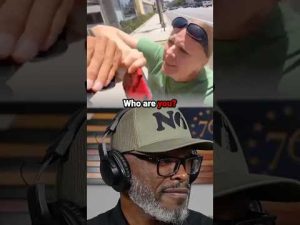In a scene torn straight out of a mistaken identity crime thriller, a California mom found herself briefly detained at gunpoint by armed agents draped in police and border patrol insignia. Let’s set the scene: a 15-year-old boy, an innocent mistaken identity, and reportedly, officials more attuned to border security than local policing. It sounds like we’re living an episode of America’s most bizarre situations, but no, this is just another day under California’s sun.
The LAUSD superintendent painted a concerning picture — agents and the insignia associated with border and federal security standing in for local law enforcement, an odd mix for sure. Folks are understandably raising eyebrows and asking about the wisdom of involving entities typically seen guarding national borders into neighborhood squabbles. It’s like inviting a team of linebackers to a ballet performance, expecting them to master the pirouette without causing some chaos first.
Critics like the mayor of Los Angeles and some east-coast governors, who maybe have their sights set on bigger political stages, seem eager to point out the discrepancy. Highlighting how military and border agents might lack the nuanced training of a local beat cop. But let’s give some credit where it’s due; these agents are trained in some valuable areas, like using common sense — a resource so scarce these days that even a morsel can feel like the Holy Grail.
Yet, it’s worth pondering whether common sense alone suffices when dealing with complex community dynamics. Any force capable of securing a border should be equipped to handle a potential criminal act without turning a neighborhood into a full-blown tactical operation. After all, it’s reassuring to think our neighborhoods won’t need protection equivalent to a military base if a teen’s mistaken address occurs.
In the colorful world of politics, actors pretending to be heroes or experts in areas far beyond their purview is nothing new. From an LA boardroom to the Maryland governor’s mansion, everyone seems to have opinions on who can police communities better. What’s undeniable is the need for local communities to decide how they want order maintained in their backyards. They deserve solutions that respect the real-world nuances of neighborhood policing, not just the one-size-fits-all approach.







